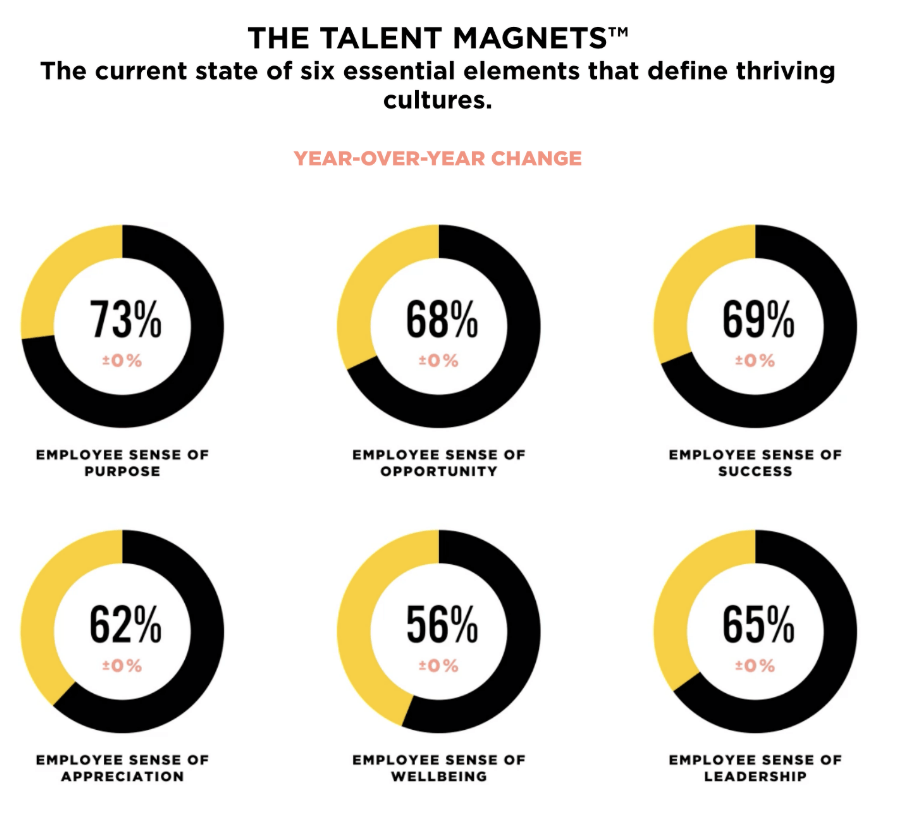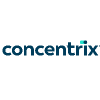An international business needs a global approach and a community of passionate talent from around the world.
With this in mind, how do you effortlessly manage teams remotely that are in different time zones and with possible cultural or even language barriers?
You need the right tools, approach, and workforce strategy. Read this guide to learn more about workforce organization and use its top tips to help you get started.
What is Workforce Organization?
Workforce organization, also known as workforce management or workforce optimization, is the backbone of meeting or exceeding your strategic objectives. Organizational strategy can include:
-
Workforce planning
-
Scheduling
-
Performance management
-
Training and development
A truly successful organizational strategy, however, also considers values. Hiring professionals who share your values aligns with your goals, but if you don't follow through on those values, you can end up turning your back on your hardest workers.
A certified B Corp, for example, will naturally attract talent passionate about sustainability. To maintain its credentials and prevent employee turnover, B Corp must conduct materiality assessments to ensure its business stays true to its mission, retains top performers, and secures future talent.
What is a materiality assessment? It's an effective strategy designed to help companies identify and assess the potential environmental, social, and governance issues affecting them. This, combined with an effective workforce organization strategy can help the productivity and efficiency of all teams—including remote and international ones.
Simple solutions that draw top talent to you are often the secret ingredient to securing your future business goals.
Why is it Important to Craft an Effective Workforce Planning Strategy for Your International Teams?
Improving communication, management, and efficiency with your current workforce of international professionals - and your future workforce - has several knock-on effects that boost your business's bottom line.
An effective strategic workforce planning process boosts productivity and results, yes, but it can also help improve employee satisfaction.
The O.C. Tanner Institute's 2025 Global Culture Study found that only 56% of employees have a sense of well-being, despite the fact that organizations that practice emotional intelligence and support employee well-being are 107 times more likely to thrive than those that don't.
Image sourced from the O.C. Tanner Institute
There are also benefits to nurturing a robust international community of full-time employees. Cultural diversity enriches businesses in many ways and helps them obtain a competitive advantage, but the most important one to consider is that your global teams know your international customers. They'll speak the same language, understand the culture in ways that you won't, and can give you deeper insights.
Even simply having a diverse current workforce has its benefits; Mckinsey found that when it comes to diversity, top quartile companies are 9% more likely to outperform their peers.
In short, effectively managing your teams leads to a better bottom line. Hiring talent from a diverse talent pool nationally and internationally leads to a better bottom line. Put them together, and you have every reason to invest in a strategic workforce management strategy that uses workforce analysis, agile workforce planning, and flexible workforce plans to improve your international teams' management, communication, and effectiveness.
How to Craft an Effective Workforce Plan for Your International Teams
An effective workforce strategy must align with your business objectives and use the latest technological advancements to track, understand, and improve workflows and management styles across the board.
The good news is that once you've established those essentials, you can roll out your new critical workforce-planning strategy everywhere - including with your international teams.
Nevertheless, you'll need to keep several steps and tips in mind to craft a bespoke, practical approach towards your people strategy that best addresses the unique needs and challenges of your international teams.
-
Define Your Goals
The first step is always to define your business and organizational goals.
One goal, for example, can be to increase employee retention. By focusing on this as your business strategy, you can investigate what leads to high employee turnover. This can be done through exit interviews and questionnaires and by bringing your current workforce into the discussion.
You might learn that the problem was with your onboarding process. In this case, a new onboarding strategy and welcome kits for new employees might be the solution - but for best results, you'll want to poll recent hires a few months after they start to get a feel for what's working and what isn't.
-
Use Workforce Analysis to Understand Each Team's Unique Needs
Workforce analysis involves collecting HR data and using analytical or workforce planning tools to understand your international workforce, its needs, and future demands. This means collecting data from sources such as:
-
Performance trackers
-
External workforce trends
-
Questionnaires
-
Interviews
Workforce analysis can be broken down into several types - using them all together is a sure way to obtain a complete picture of your workforce and its needs.
Talent Acquisition Analytics: Using data to optimize your hiring processes, identify top talent, and improve candidate experience.
Talent Development Analytics: Using data to track how effective your training programs are, measure skill development, and identify high-potential employees.
Compensation & Benefits Analytics: Using data to improve your compensation packages, determine how effective your benefits programs are, and ensure pay equity.
Employee Engagement Analytics: Using data to gain insight into employee sentiment, identify drivers of engagement, increase employee retention rates, and improve employee morale.
To conduct effective workforce analysis, you also need to keep an eye on metrics such as employee turnover rates, employee engagement scores, salary distribution, typical career path, and training opportunities.
Of course, this is a lot to monitor; consider using workforce analysis software or solutions with built-in predictive analytics that integrate with your current systems to get the most out of your data.

-
Combine Workforce Analytics with Customer Behavior
You must always bring your customers into the conversation to secure future growth. Considering customer behavior and needs, for example, can help you better understand skill gaps and future staffing requirements.
For example, keeping track of customer behavior can help you understand:
-
Which international communities are most interested in your product
-
When they are most likely to buy
Using those two datasets alone can help you secure future success by pre-emptively meeting the necessary staffing levels. If you can expect a huge holiday-based surge in sales based on specific data, then you know to add more part-time employees or outsource during those few days or months of the year.
-
Use AI Forecasting to Better Predict Future Staffing and Customer Needs
Use artificial intelligence analytical tools to understand future demand and skills that will become necessary, and help you better predict future scenarios based on the information you already have. These forecasting tools can help you:
-
Fill skill gaps before they interrupt your workflow.
-
Adjust staffing levels to best suit your shifting customer base.
-
Better understand what management approaches and perks are worthwhile, allowing you to fine-tune your benefits package to increase employee retention.
-
Predict future scenarios and adjust your strategy so that you can continue to meet your long-term goals.

-
Overhaul Your Onboarding and Training Process
One essential part of any critical workforce planning strategy is how you onboard new hires.
According to a Cognexo report, 54% of office employees were dissatisfied with their onboarding experience. Moreover, a 2023 O.C. Tanner report found that 43% of employees only had one day of onboarding.
Onboarding is particularly essential with regard to an international and multigenerational workforce. What’s more, you may need to consider extra steps that you wouldn’t include for a non-international workforce.
For instance, use pre-boarding to address important elements such as visa or work permit requirements. Onboarding should include areas like cultural orientation and technology access, while also explaining compliance and legal requirements.
Another important facet is to improve candidate communication throughout your onboarding process. Candidates should be kept informed throughout - this minimizes the risk of losing valuable candidates to misunderstandings or lack of information, while ensuring any concerns can be resolved in good time.
Smooth transitions, ample support, clear roles, and practical guidance are essential to increasing employee retention and shaping a workforce that helps you meet your future goals.
Ongoing monitoring and constant adjustments can help you refine the onboarding, training, and skills-building processes for each employee.
-
Establish Time Management and Attendance Tracking Methods
Advanced tools like time and performance management tracking are essential to organizational success for remote international teams. The data collected from these tools can help you identify key performers and those who need extra support.
Be careful when it comes to using these tools, however. An employee who misses deadline after deadline may not be lazy but unsupported. Use these tools to help you with resource allocation and keep track of performance in your remote teams.

-
Invest in a Robust Development Program
You need to reward your high-potential employees with future growth. As previously mentioned, you can do this by tracking their current capabilities and using analytics to identify skill gaps and the in-demand skills that will address future market trends.
Additionally, seek feedback from employees - they will tell you what skills they need to progress. This will increase their loyalty and, in turn, improve employee retention rates.
Invest in training programs that will allow your current employees to fill your business's future workforce requirements.
-
Use Essential and Effective Remote Working Tools
International teams need access to the best working tools. This isn’t just applicable to fully remote employees - employees may be hybrid or operate away from upper management.
Therefore, to improve productivity and efficiency, your international teams will need the ability to forward phone calls, work collaboratively in the cloud, and attend meetings remotely.
The good news is that these remote tools are now very advanced, with new workflow management platforms that allow you to allocate tasks, track performance, and more while empowering your remote staff with what they need to work effectively anywhere.
Research and compare the solutions available and opt for the one that best suits your workforce needs, as well as your overall organizational goals and budget.

Final Takeaway
International teams can thrive with the right tools and support from management, and help the company meet its strategic goals.
Crafting an effective workforce organizing strategy for international teams requires a thoughtful, data-driven approach that blends the right tools, strategic planning, and employee feedback.
By focusing on workforce analysis, using appropriate technology, and implementing supportive management practices, you can make the most of remote and diverse teams - use the tips provided in this article to enhance performance and retention, ensuring your international teams remain productive and aligned with the company's values.
Ultimately, a well-organized workforce strategy not only boosts efficiency but also nurtures a thriving, engaged international team that drives long-term business success.







